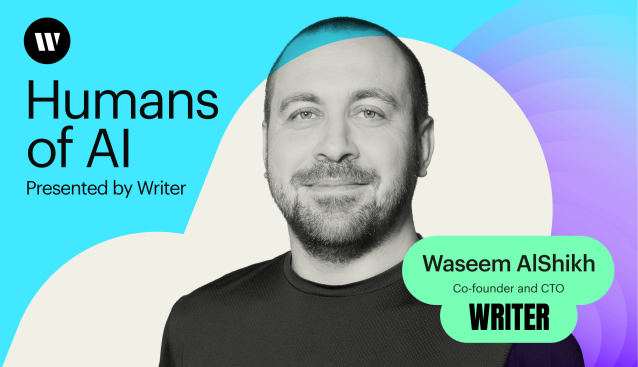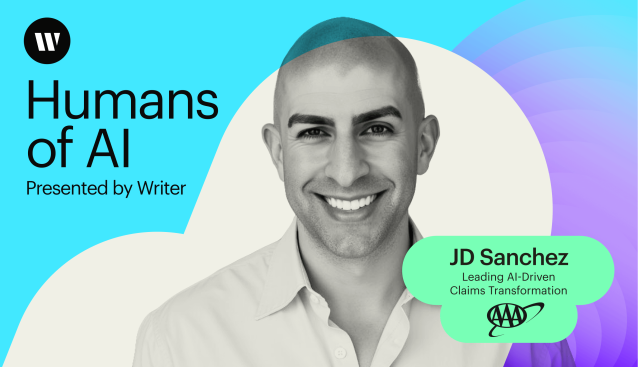Humans in the loop
– 9 min read
Making big bets on corporate AI ventures: IBM’s Emily Fontaine

Fifteen years ago, the public wasn’t talking about AI in a highly realistic way — aside from some ideas of self-driving cars and smart home devices floating around. But the technology was still largely confined to academic research and niche applications.
And 15 years ago, well ahead of her time, our HoAI guest Emily Fontaine watched in wonder as IBM’s Watson beat Ken Jennings on Jeopardy and thought, “AI is going to be transformative.” This moment was the stepping stone to her current role at IBM, where she leads their venture capital and AI strategy. In this episode, she shares her thoughts on IBM’s evolving AI strategy, the hurdles in AI adoption, the importance of “fit-for-purpose” AI models, and how fostering a collaborative culture drives innovation.
- Emily’s career at IBM, sparked by Watson’s 2011 Jeopardy win, led her to her current role, where she heads up their venture capital and AI strategy.
- Only 10% of enterprises have a strategy to scale their AI initiatives — mainly due to talent shortages, high costs, and privacy concerns.
- IBM advocates for smaller, “fit-for-purpose” AI models, which can reduce inferencing costs by 30% and are more accessible and customizable.
- The success of AI strategies hinges on organizational culture, with IBM focusing on collaboration, listening, and building trust to foster high-performing teams.
- Emily advises enterprise leaders to invest in AI by trusting the right teams, conducting thorough due diligence, and allowing for hands-on testing with live demos.
From couch viewer to venture capital leader
Emily’s journey into AI and business was far from a sudden shift. She knew she wanted to be on the business side professionally, helping clients deliver the best solutions for their end users.
And she set her sights on IBM after an episode of Jeopardy in 2011.
Watson, a question-answering computer system developed by an IBM research team, defeated the show’s two all-time champions. While many audience members were stunned and a bit intrigued by the technology, it’s safe to say not many took such immediate interest and action like Emily did.
“That was the moment I knew that AI was gonna be transformative to the industry,” Emily recalls. She was determined to be part of the team at IBM that would deliver cutting-edge AI solutions to clients and help them achieve their goals.
Fast forward to today, and Emily is living the career she always envisioned. A quick look at her LinkedIn profile reveals an impressive trajectory that began as a program lead. Earlier in her career, she served as the AI federal leader for IBM Consulting, where she developed and delivered innovative AI solutions that enhanced the company’s products and services. Then, she spent three years in the chair and CEO’s office, playing a crucial role in shaping the company’s AI strategy.
Her path has culminated in her current role as the global head of venture capital. Emily’s job now centers around investing in the next generation of AI and helping businesses reinvent the way they do work.
Modern hurdles in AI adoption
Despite the growing interest in AI, only a small fraction of enterprises have a strategy to scale their AI initiatives.
“80% of enterprises are experimenting with Gen AI,” Emily says. “So that means doing a pilot, doing a POC, but less than 10% — which is kind of crazy to think about — have a strategy to scale.”
And what’s stopping 90% of enterprises from developing a strategy? According to Emily, it’s a combination of a few things — a talent shortage, high energy consumption and costs, as well as privacy, security, and IP concerns.
Over the last six to 12 months, Emily says the security and privacy concerns have led companies to explore alternative solutions as they integrate AI into their operations. For example, they’re considering on-premises solutions versus cloud-based solutions. They’re also grappling with combining these different approaches, deciding which applications and workloads should reside where. It especially affects industries like banking, where Emily emphasizes the need for higher cloud solutions.
She also notes that while IBM’s strategy focuses on AI and hybrid cloud, a third critical area is quantum computing.
“That’s where the future is going, and we’ve gotta make sure that we’ve got great talent to get after Quantum,” she emphasizes. “Our clients need great talent. The industry needs great talent. That’s another issue that we’re gonna potentially see.”
The rise of corporate venture capital in AI
There’s a lot going on with AI, hybrid cloud, and quantum computing, but the space of corporate venture capital (CVC) is also having a moment. CVC-backed funding was up 20% year-over-year, from 2023 to 2024 — with 37% of that investment going into AI, primarily in the US.
With the tidal wave of CVC gushing into AI, there’s one question on everyone’s mind: What’s next? Emily predicts that these trends will continue, and more investing will follow. But she stresses that in 2025, there must be a cash return to investors.
“There are a lot of portfolio companies out there that are ready for an exit, right? Whether that be an M&A [merger and acquisition], whether that be IPO [initial public offering],” she explains.
Strategic investors like IBM are ready to capitalize on these opportunities as the windows for exits open. And IBM’s strategic investments in quantum, agentic AI, and AI for security are driven by the belief that these areas will be the next big frontiers in technology.
Investment in these areas also brings up the issue of striking the right balance between automation and human involvement. For agentic AI, Emily is optimistic but cautious about the enterprise’s appetite for keeping humans in the loop.
A case for smaller, open-source AI models
Amid everything else, the AI world is debating whether to use large proprietary models or smaller open-source ones. IBM advocates for smaller, “fit-for-purpose” models, a stance reinforced by the success of DeepSeek.
“Smaller open-source models are really how the future’s gonna be built,” Emily explains. These “fit for purpose” models are more cost-efficient, accessible, and customizable, making them ideal for various applications. “At IBM, when we’re using this strategy, we’ve seen 30% reductions in AI inferencing costs.”
AI doesn’t demand huge data centers, and there’s no scientific proof that AI must be expensive. Emily says these are opportunities for engineering to solve, allowing startups and companies to reduce costs and make AI more practical and widespread.
“For technology to be as transformative as everyone wants AI to be, it’s gotta be affordable, it’s gotta be accessible,” she stresses.
The role of organizational culture in AI success
Emily firmly believes that an organization’s culture is crucial for its AI strategy’s success. Over the past few years, IBM has focused on simplifying processes, increasing speed, and boosting productivity by eliminating inefficiencies.
“Behaviors define culture and culture really defines outcomes,” she says. “IBM has this amazing portfolio. We’ve got expertise, we’ve built really trusting relationships.” For Emily, it all comes down to relationships — collaboration and listening are the two most important qualities.
Collaboration fosters curiosity, inspires innovation, and enhances relevant skills. As leaders, it’s crucial to encourage, support, and recognize teams, especially in the fast-paced world of AI. However, leaders must also listen.
“I don’t think that we do enough listening to what are people’s motives, what are they concerned about, what are their needs,” Emily says. “When we do this and when we build these meaningful relationships, we cultivate high-performing teams.”
Inspiring teams and individuals to achieve excellence and drive growth is how you create a successful culture. It’s even more important when navigating change and implementing new technologies in the fast-moving era of AI.
Automating tasks with AI can also help build organizational morale — like flagging employee birthdays or work anniversaries. “I love when we’re able to recognize people, and these kinds of amazing systems help remind us of that,” Emily says.
Emily’s advice and AI vision for enterprise leaders
For the last 15 years, Emily has been placing big bets on the future — and she has some advice for enterprise leaders as they start investing in their AI strategies.
She emphasizes the importance of trusting the right teams and conducting thorough due diligence. She notes that many companies claim to be AI-driven — but the key is to see a live demo rather than a prerecorded one.
Testing if the company allows you to change inputs and even play around with your own data in a sandbox environment is important. This is the best way to evaluate the authenticity of an AI solution.
“I’ve been in the AI business for a long time, and AI has been a part of my life for more than, I would say, a third of my life,” she reflects. “But I think there’s so much more than that. I think AI helps us be more effective, be more efficient, and make better decisions. And it’s when we are passionate about something and we’re excited about something, it’s really cool and exciting to find your passion. Find what excites you, find what you want to do.”
Almost 15 years ago, Emily saw the potential of AI through IBM’s groundbreaking victory with Watson. This pivotal moment not only sparked her passion but also set her on a path to become a leading voice in the field. Today, her commitment to AI and her role at IBM are more significant than ever. She’s not a witness to the evolution of AI — she’s a driving force behind it.
It’s clear that the journey of AI isn’t just about the technology itself, but the transformative impact it has on people and industries. In this season of Humans of AI, we’ll be talking to people who are transforming their careers and, as a result, the trajectory of their businesses through the adoption of AI.
Want to hear more stories from the humans working at the crossroads of business and generative AI? Subscribe to Humans of AI wherever you listen to podcasts.



